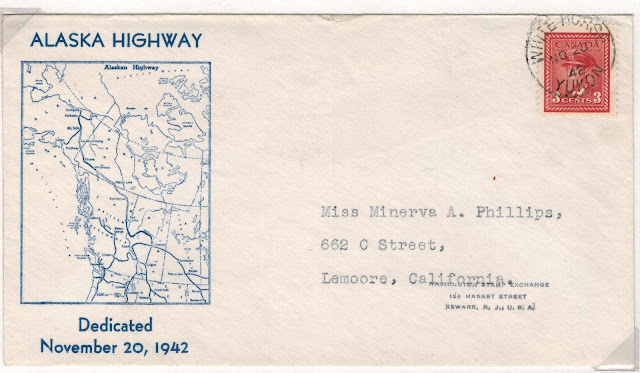
In 1984, Vancouver hosted the 69th World Esperanto Congress. It was only the second Congress held in North America since 1915. This post provides a brief introduction to Esperanto and its annual Congresses showing souvenir mail from selected meetings including those held in North America.
Dr. Ludwig Zamenhof and Esperanto

Esperanto is a language created in the late 1870s and early 1880s by Dr. Ludwig Lazarus Zamenhof (1895-1917) born in Bialystok in the Russian Empire (now part of Poland). According to Zamenhof, Esperanto was created to foster harmony between people from different countries. With the publication of his first book detailing Esperanto, the
Unua Libro , in 1887, Zamenhof saw the number of speakers grow rapidly over the next few decades.
Philatelic Commemoration of Zamenhof
In 1927, the USSR issued a postage stamp featuring a vignette of Dr. Zamenhof to commemorate the 40th anniversary of the creation of Esperanto. Since then, several countries have celebrated Esperanto by issuing postage stamps or providing special cancellations to mark Esperanto events.
USSR 1927

 Zamenhoff vignette
USA 1933
Zamenhoff vignette
USA 1933
On December 15, 1933, the Brooklyn Esperanto Society prepared a souvenir cover to commemorate the birthday of Dr. Zamenhof.

Brooklyn, December 15, 1933
 World Esperanto Congresses
World Esperanto Congresses
In 1905 , the first World Congress of Esperranto was held in Boulogne-sur-Mer, France, Since then Congresses have been held in different countries yearly, except during the two World Wars.
Examples of souvenir covers and cards from selected conventions are shown below.
1908 Dreden


Dresden, August 10, 1908
1936 Vienna

Vienna, August 11, 1936
 1955 Bologna
1955 Bologna

Bologna, August 2, 1955
 1969 Helsinki
1969 Helsinki

Helsinki, August 2, 1969
 North American World Congresses
North American World Congresses
The World Congress has only been held twice in North America since 1915, Portland in 1972 and Vancouver in 1984.
1972 Portland

Portland, August 1, 1972

 1984 Vancouver
1984 Vancouver
The post card below was mailed from Vancouver during the1984 World Congress. The card had been prepared for the 1967 Congress which was to be held in Tel Aviv but was moved to Rotterdam. (See Below)

Vancouver, July 22, 1984 (Machine and Roller cancel)
[The author has not seen a Vancouver Congress handstamp]

Vancouver Congress Seal
1967 World Congress Tel Aviv
The post card used in the 1984 mailing had been prepared for the 52nd Congress which was to be held in Tel Aviv in 1967. The Congress could not be held in Israel that year because of the Yom Kipper war and was moved to Rotterdam.
Israel had prepared and printed a Zamenhof stamp for the occasion, but the stamp was never issued.
52nd World Congress Tel Aviv Logo
(1967 Congress moved to Rotterdam)
1975 Canadian Esperanto Congress
In 1975, the Calgary Post Office used a slogan cancellation to promote the Canadian Esperanto Congress. This is Canada's only Esperanto slogan.
Calgary, June 16, 1975
SPEAK PARLEZ
ESPERANTO
KANADA KONGRESSO
28 - JUNIO - 30


















































